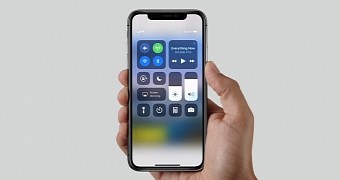The iPhone X has officially started shipping, and one of the main concerns of people who spent $1,000 or more on the device is that the Super Retina display could experience the same issues as many other flagships equipped with OLED displays.
As we’ve reported earlier this week, some of the early iPhone X reviews published on YouTube suggested that some sort of blue shift effect also exists on Apple’s flagship device, but as compared to Google’s Pixel 2 where it was considered the end of the world, little has been said about the iPhone.
Google itself explained in October that blue shift is pretty much a common thing on OLED screens, emphasizing that it isn’t by no means a sign of damaged hardware or anything like that.
No repairs for common display issues?
And because Apple wants to avoid generating the same controversy, the company rolled out a Super Retina display FAQ article to discuss potential issues that could be experienced by customers.
Unsurprisingly, Apple says blue shift is something perfectly normal on the iPhone X, so whoever notices different colors when looking at the device from different angles should not consider it a hardware problem. Apple says the following:
“ If you look at an OLED display off-angle, you might notice slight shifts in color and hue. This is a characteristic of OLED and is normal behavior. ”
Another common problem experienced on OLED screens is the burn-in effect, and once again, Apple says the same thing might be observed on the iPhone X. The company explains this is normal behavior, but points out that it spent a considerable amount of time trying to reduce this effect on the iPhone X.“ With extended long-term use, OLED displays can also show slight visual changes. This is also expected behavior and can include “image persistence” or “burn-in,” where the display shows a faint remnant of an image even after a new image appears on the screen. This can occur in more extreme cases such as when the same high contrast image is continuously displayed for prolonged periods of time. We’ve engineered the Super Retina display to be the best in the industry in reducing the effects of OLED "burn-in." ”
While it’s a good thing that Apple wants to set things straight before more people get the iPhone X, it also raises some questions as to the way the company handles potential repairs reporting display issues.In most of the cases, Apple’s warranty does not cover issues which the company consider to be normal, so should a customer be not pleased with the blue shift, the Apple Store might not agree to replace the screen or the device. It remains to be seen how many buyers report display issue with the iPhone X though.

 14 DAY TRIAL //
14 DAY TRIAL //